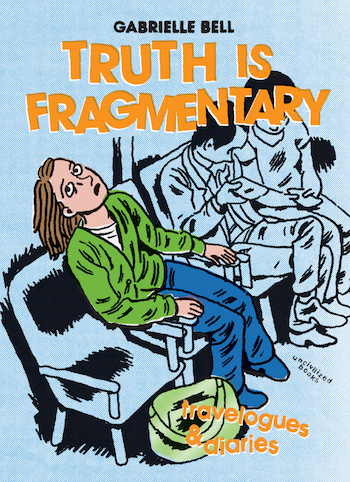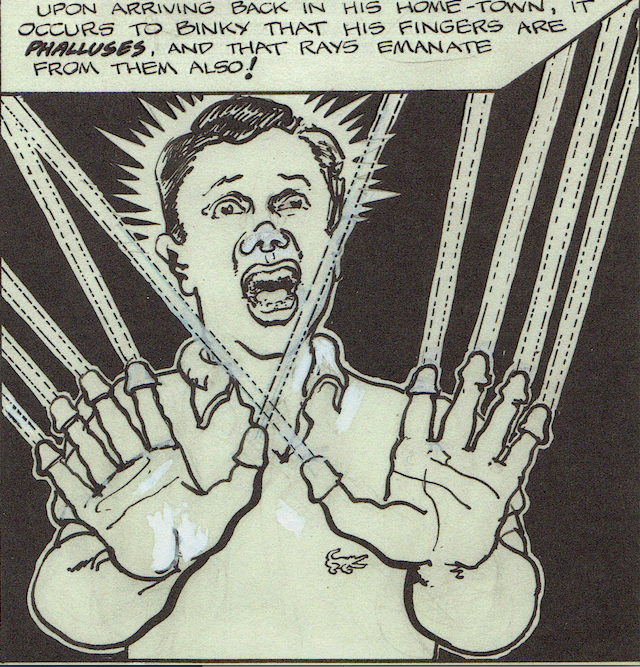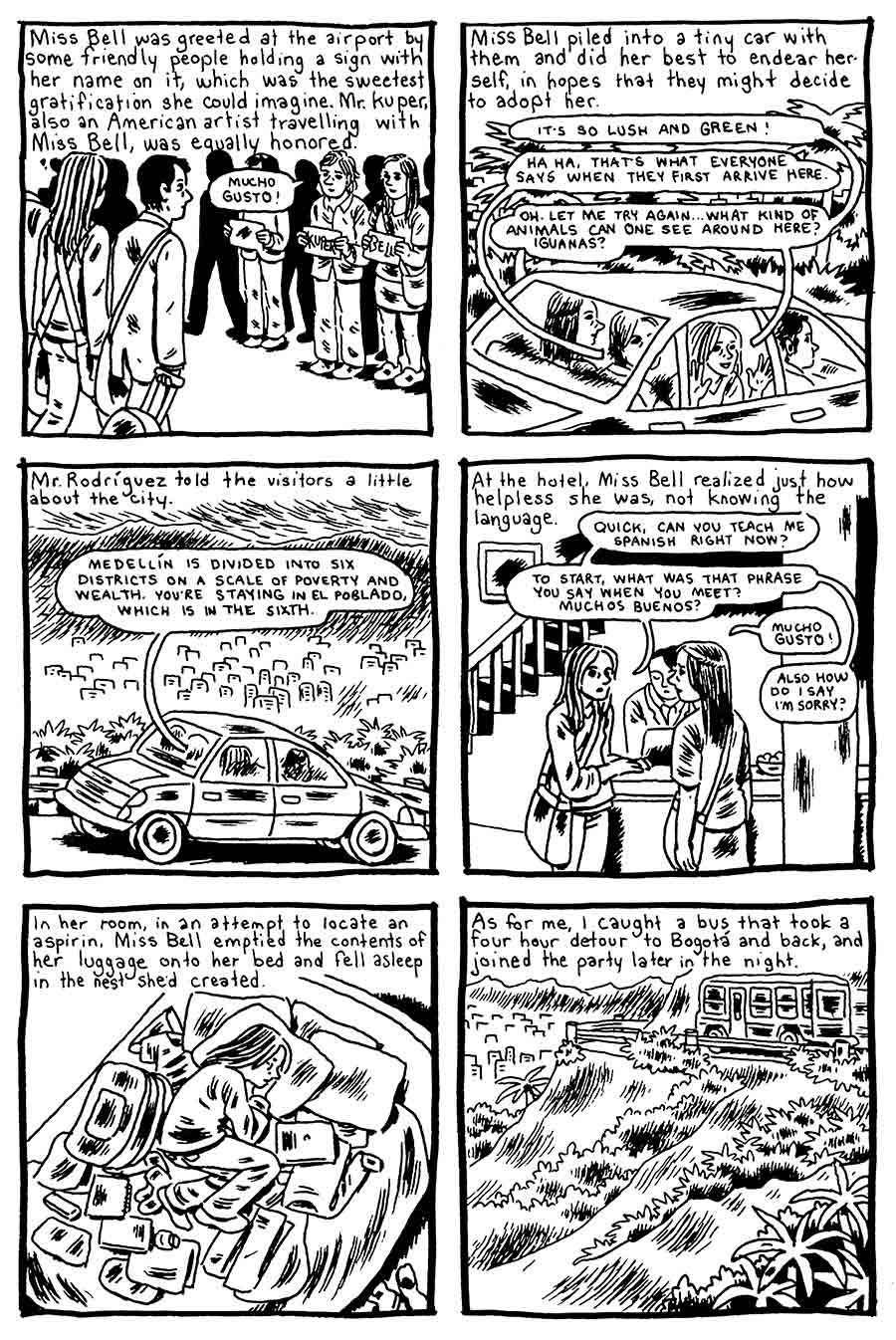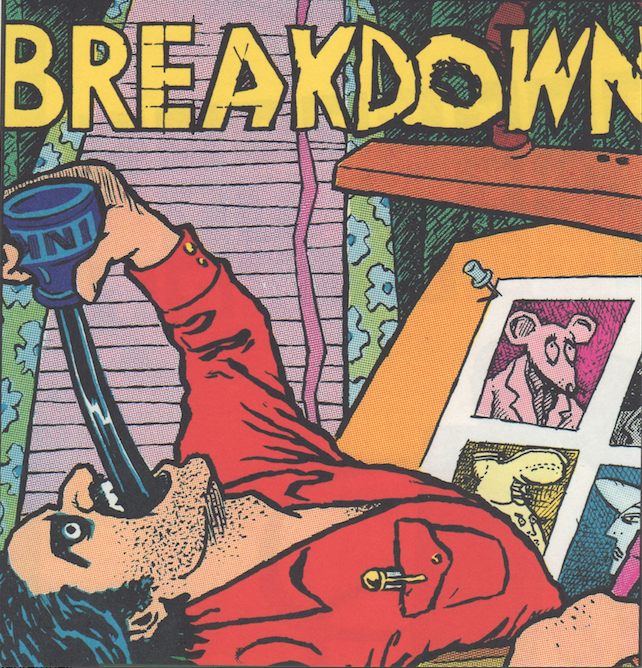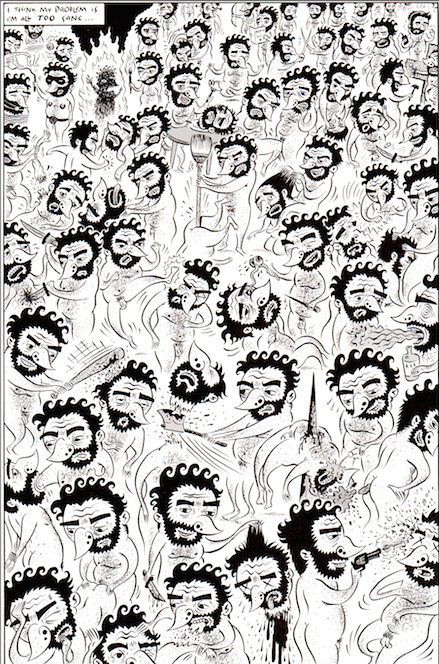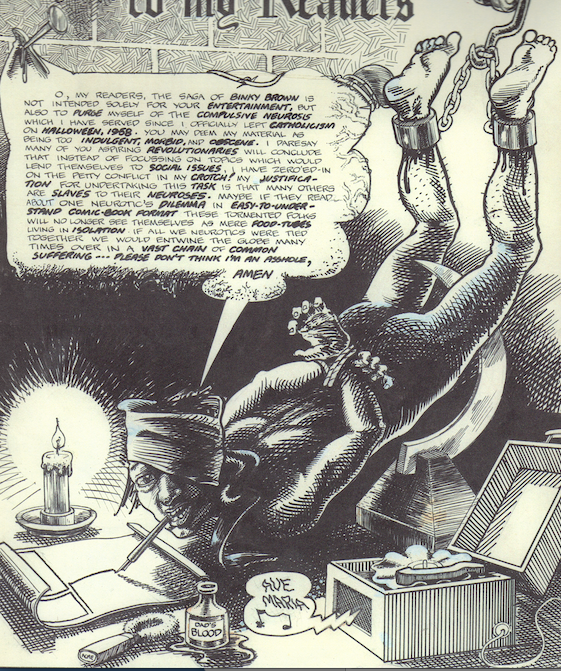In 1972, the genre of autobiographical comics was born unto us by a mysterious penis with magical powers. Technically, of course, there was a man attached to the penis, though mostly he was just in its thrall. The legacy of that immaculate conception lives on today in the long line of tortured male cartoonists who express intense dissatisfaction with their lives and art via detailed accounts of everything they have ever done or imagined doing with their genitals.
Not that there’s anything wrong with that. As with any subgenre, some works of dick-centric autobio are good, some are bad, and some are in between. Justin Green is not just first, but also probably the finest, of its lauded practitioners, including Robert Crumb, Ivan Brunetti, Joe Matt, and Chester Brown (to name just a few). Binky Brown Meets the Holy Virgin Mary is not exactly a meditation on Green’s struggles with obsessive-compulsive disorder, but is a visceral account of what it’s like to live with that condition—and the way in which Green rendered his interiority still strikes me as singular in what has since become a very crowded category.
In Binky Brown we see two interwoven themes that appear with great frequency in autobio: sexual obsession and the torturous act of cartooning.
Cartooning is hard, god knows, especially when you’d rather be doing PEEN STUFF. The tough compromise that some men have made is to simply draw their dicks constantly, very often sacrificing any semblance of story or self-respect in the name of their art, such as it is.
Recently, I was reminded of the inalienable right of tortured male cartoonists to create work — entire catalogs of work — about their dicks when I read this “positive” review of The Truth Is Fragmentary at The Comics Journal, where reviewer John Seven explores Gabrielle Bell’s conflicted relationship with making art. Within it is a note of condescension that is perhaps most palpable as the review begins.
Poor Gabrielle Bell. You’d think a cartoonist’s life would be perfect for her loner tendencies, but she’s constantly having to deal with being flown to comics events around the world and facing expectations to interact with the community that comes with cartooning. She doesn’t always do so well.
Which sure, Bell writes a lot about loneliness and social awkwardness, but the subtext here is that she whines about it. There is an implicit question — Why on earth would she complain about her “perfect” cartoonist’s life? — followed by an implicit answer. The poor gal simply can’t handle the basic functions of her job.
Antisocial behavior is, of course, celebrated in men’s autobio, which rarely traffics in stories about friendship (as Bell’s often do) or even feature any round character that is not the protagonist — or, more specifically, the protagonist’s penis, which is all at once the hero, the villain, and the love interest of his story. Anyway, it’s not until much later in the review that Seven (who seems to hold Bell’s work in high regard) begins to ask much more explicit questions about his subject.
Why does [Bell] challenge herself to these diaries when she also often mentions how dissatisfied she is by the prospect of doing them? What is she trying to attain by sharing these works that could easily function as private, daily exercises in cartooning of no interest to anyone else but the cartoonist?
Why, indeed, is Bell a cartoonist at all? Can you imagine a reviewer asking this existential question of one of the tortured men of autobio?
Mr. Spiegelman, gee, you don’t look so hot. Are you sure about this comics thing? Maybe you should take a break. Adjust your meds. Lie down or something.
Heyyyyyy Ivan. You okay, buddy? Couldn’t help but notice that you constantly draw yourself committing suicide. Have you ever considered keeping those thoughts to yourself?
Justin Green. Dude. I know your penis is about to invent a whole new art form, but are you sure it’s worth THIS?!
These questions seem preposterous because when men share their inner worlds, whether they’re glorified bathroom wall graffiti or something more sophisticated, we automatically see those thoughts and feelings as worthy of being shared. No justification is required. And if those men have to endure some sort of trial or struggle to get that art out into the world, all the better. The comics world loves nothing more than some good old-fashioned MANGST.
Of course, Seven writing about Bell is just one example of how comics culture questions the very existence of a women’s autobio. Lest you think this phenomenon is limited to male critics — or to critiques of Bell — I’m very sorry to report a conversation I once had with a well respected lady cartoonist who spoke to me at length about her distaste for women’s autobio, which she considers frivolous. She singled out, among others, Vanessa Davis, whose charming work she referred to as “teenage twaddle” that “should have not been printed.”
I can’t tell you how irritated I am that they use perfectly good paper and product and marketing and everything else,” she said. “They put money into such egocentric crap.
Women in autobio can’t win, really. If they portray themselves as happy, their stories are too light to be taken seriously. If they explore any sort of negative emotion, they’re perceived as complaining. And women who mix the two approaches run the risk of being deemed uneven, as in this review of Hyperbole and a Half, where Stacie Williams criticizes Allie Brosh for drawing “relatively frivolous narratives” about “unremarkable activity” alongside her devastating accounts of clinical depression.
The inherent worth of women’s autobio is hardly a given. Its authenticity is constantly called into question — and all too often, the work is found to come up short. Meanwhile, many people labor under the delusion that female cartoonists are accorded the same critical treatment as their male counterparts. I’m reminded of those men on the street who are always telling me to smile. Why are Gabrielle Bell’s comics so glum? And what am I so worked up about, anyway? Let’s raise a glass to the latest perk in Bell’s perfect life as a cartoonist: John Seven gave her a good review. :)

